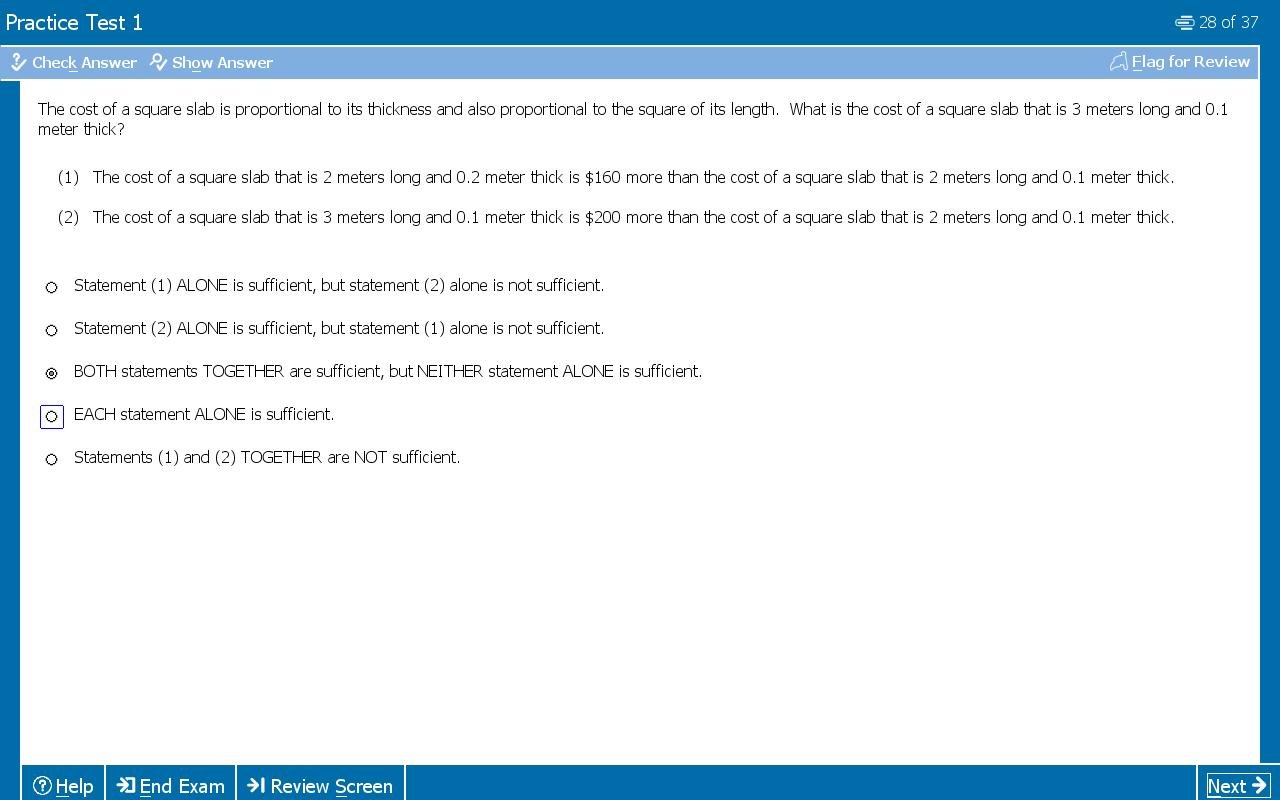Events & Promotions
|
|

GMAT Club Daily Prep
Thank you for using the timer - this advanced tool can estimate your performance and suggest more practice questions. We have subscribed you to Daily Prep Questions via email.
Customized
for You
Track
Your Progress
Practice
Pays
Not interested in getting valuable practice questions and articles delivered to your email? No problem, unsubscribe here.
- Nov 22
11:00 AM IST
-01:00 PM IST
Do RC/MSR passages scare you? e-GMAT is conducting a masterclass to help you learn – Learn effective reading strategies Tackle difficult RC & MSR with confidence Excel in timed test environment - Nov 23
11:00 AM IST
-01:00 PM IST
Attend this free GMAT Algebra Webinar and learn how to master the most challenging Inequalities and Absolute Value problems with ease. - Nov 25
10:00 AM EST
-11:00 AM EST
Prefer video-based learning? The Target Test Prep OnDemand course is a one-of-a-kind video masterclass featuring 400 hours of lecture-style teaching by Scott Woodbury-Stewart, founder of Target Test Prep and one of the most accomplished GMAT instructors.
D
Be sure to select an answer first to save it in the Error Log before revealing the correct answer (OA)!
Difficulty:
 45%
(medium)
45%
(medium)
Question Stats:
65% (01:49) correct 35%
(02:00)
wrong
35%
(02:00)
wrong  based on 1667
sessions
based on 1667
sessions
History
Date
Time
Result
Not Attempted Yet
The cost of a square slab is proportional to its thickness and also proportional to the square of its length. What is the cost of a square slab that is 3 meters long and 0.1 meter thick?
(1) The cost of a square slab that is 2 meters long and 0.2 meter thick is $160 more than the cost of a square slab that is 2 meters long and 0.1 meter thick.
(2) The cost of a square slab that is 3 meters long and 0.1 meter thick is $200 more than the cost of a square slab that is 2 meters long and 0.1 meter thick.

DS.jpg [ 91.34 KiB | Viewed 38873 times ]
(1) The cost of a square slab that is 2 meters long and 0.2 meter thick is $160 more than the cost of a square slab that is 2 meters long and 0.1 meter thick.
(2) The cost of a square slab that is 3 meters long and 0.1 meter thick is $200 more than the cost of a square slab that is 2 meters long and 0.1 meter thick.
Attachment:
DS.jpg [ 91.34 KiB | Viewed 38873 times ]
Kudos
Bookmarks
As per questions c = ktl^2
where c is the cost, t is the thickness, l is the length and k is coefficient of proportionality.
1) k*0.2*4 - k*0.1*4 = 160. This will give us k = 400
Answer to question c = 400*0.1*9 = 360
2) k*0.1*9 - k*0.1*4 = 200. This will give us k = 400
Answer to question c = 400*0.1*9 = 360
Both option answers the question, so D.
where c is the cost, t is the thickness, l is the length and k is coefficient of proportionality.
1) k*0.2*4 - k*0.1*4 = 160. This will give us k = 400
Answer to question c = 400*0.1*9 = 360
2) k*0.1*9 - k*0.1*4 = 200. This will give us k = 400
Answer to question c = 400*0.1*9 = 360
Both option answers the question, so D.
Kudos
Bookmarks
Thickness = t
Length = l
\(c = 9*0.1*k = ?\)
"and also proportional" means that we can put both in the same formula:
\(Cost = k*t*l^2\), where k is a constant
1)
\(k*2^2*0.1\) costs x
\(k*2^2*0.2\) costs x + 160
Using rule of three (cross-multiplication): \((k*2^2*0.1)/(k*2^2*0.2)= x/( x + 160 )\), you can find x, and then do the same with 9*0.1*k
SUFFICIENT
2)
Using the same reasoning of 1)
SUFFICIENT
Answer D
PS.: It was worth? Consider a kudo...
Length = l
\(c = 9*0.1*k = ?\)
"and also proportional" means that we can put both in the same formula:
\(Cost = k*t*l^2\), where k is a constant
1)
\(k*2^2*0.1\) costs x
\(k*2^2*0.2\) costs x + 160
Using rule of three (cross-multiplication): \((k*2^2*0.1)/(k*2^2*0.2)= x/( x + 160 )\), you can find x, and then do the same with 9*0.1*k
SUFFICIENT
2)
Using the same reasoning of 1)
SUFFICIENT
Answer D
PS.: It was worth? Consider a kudo...










